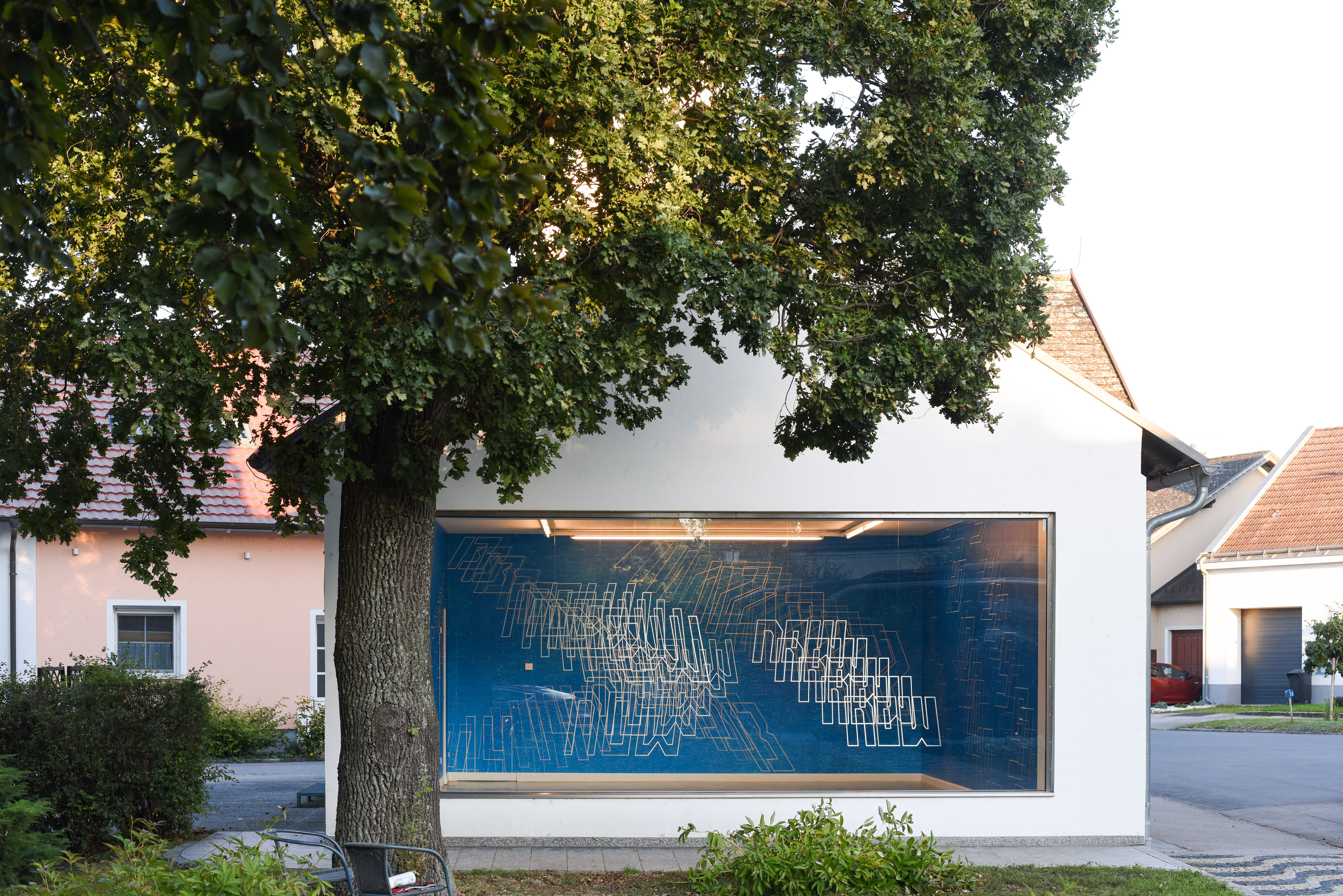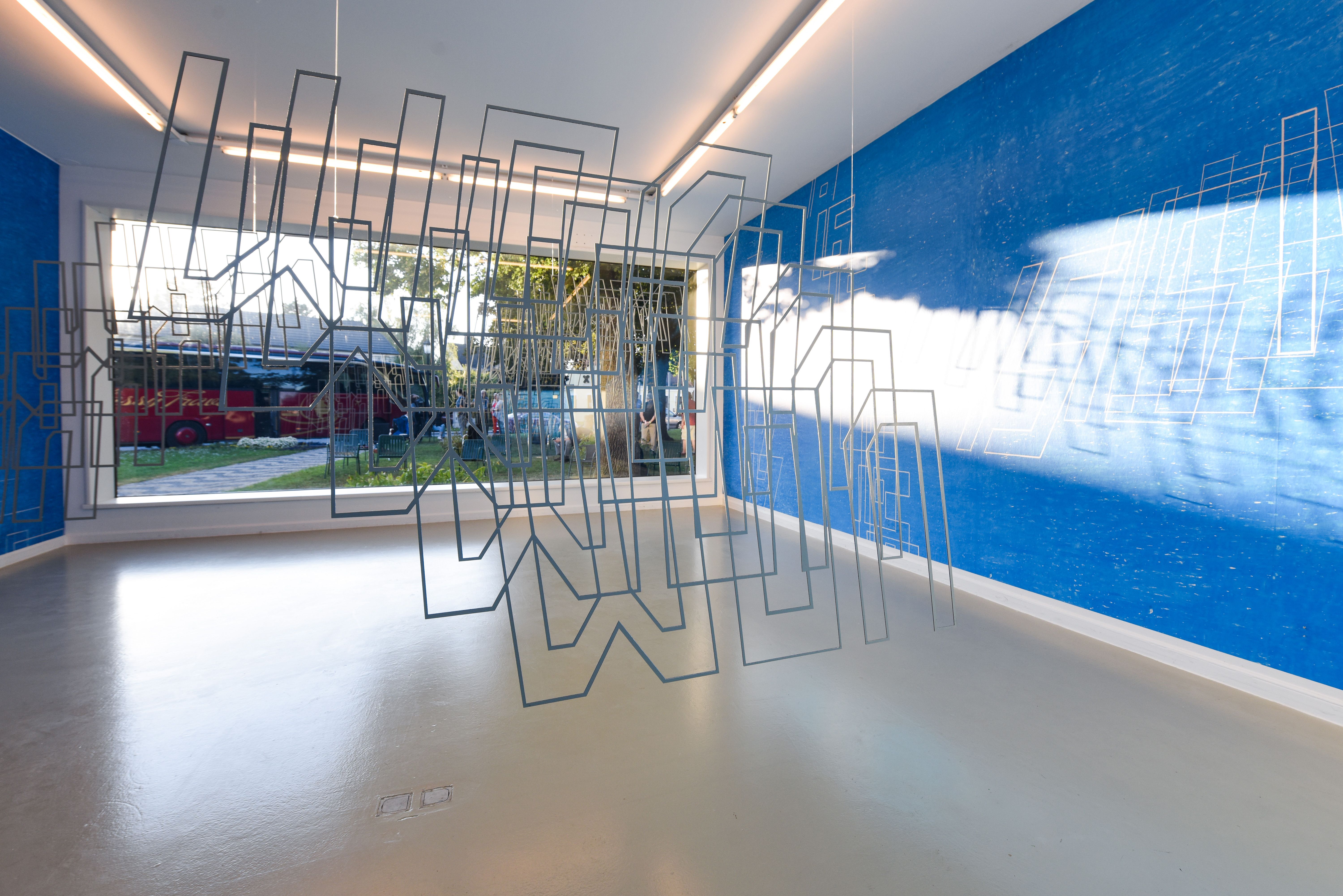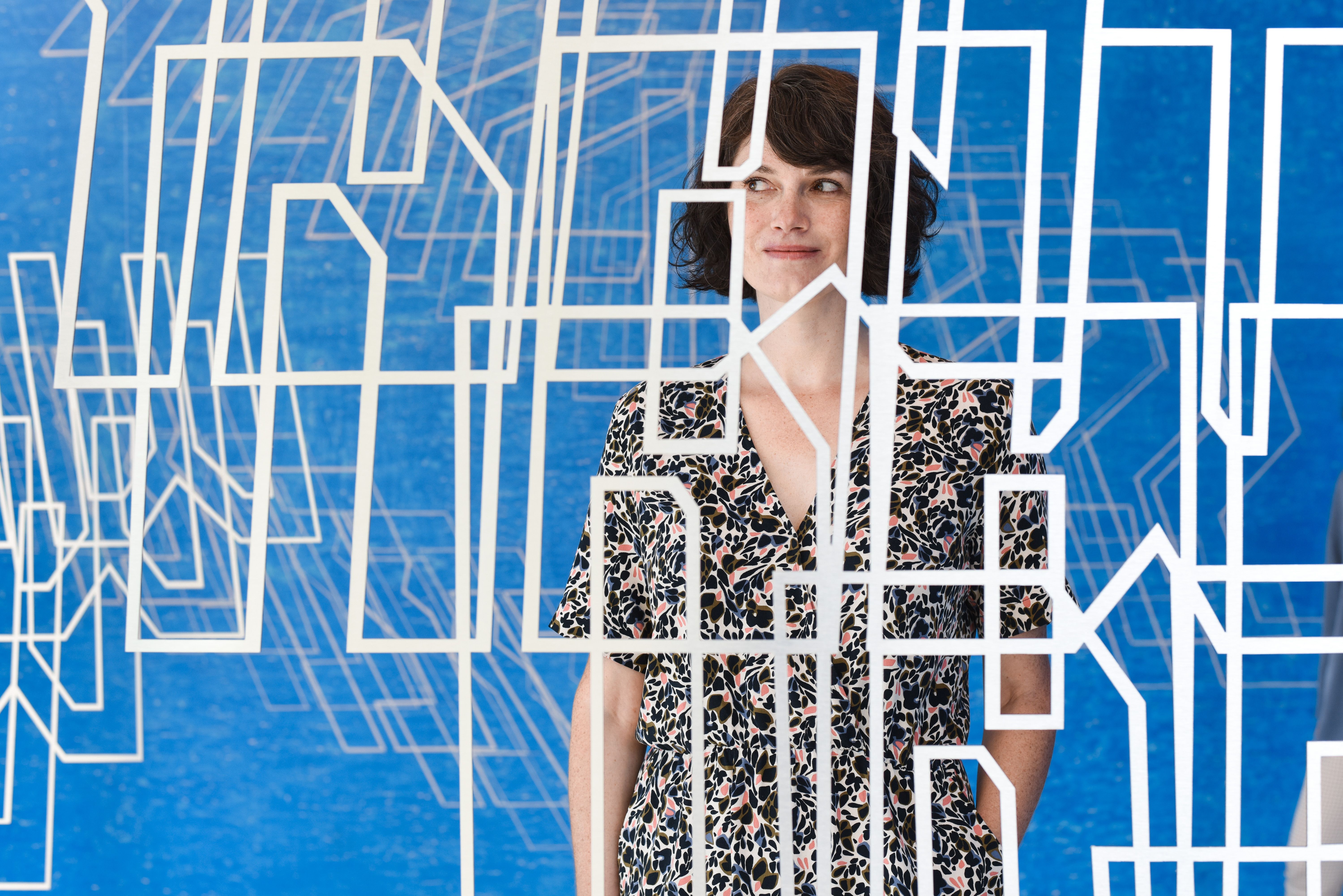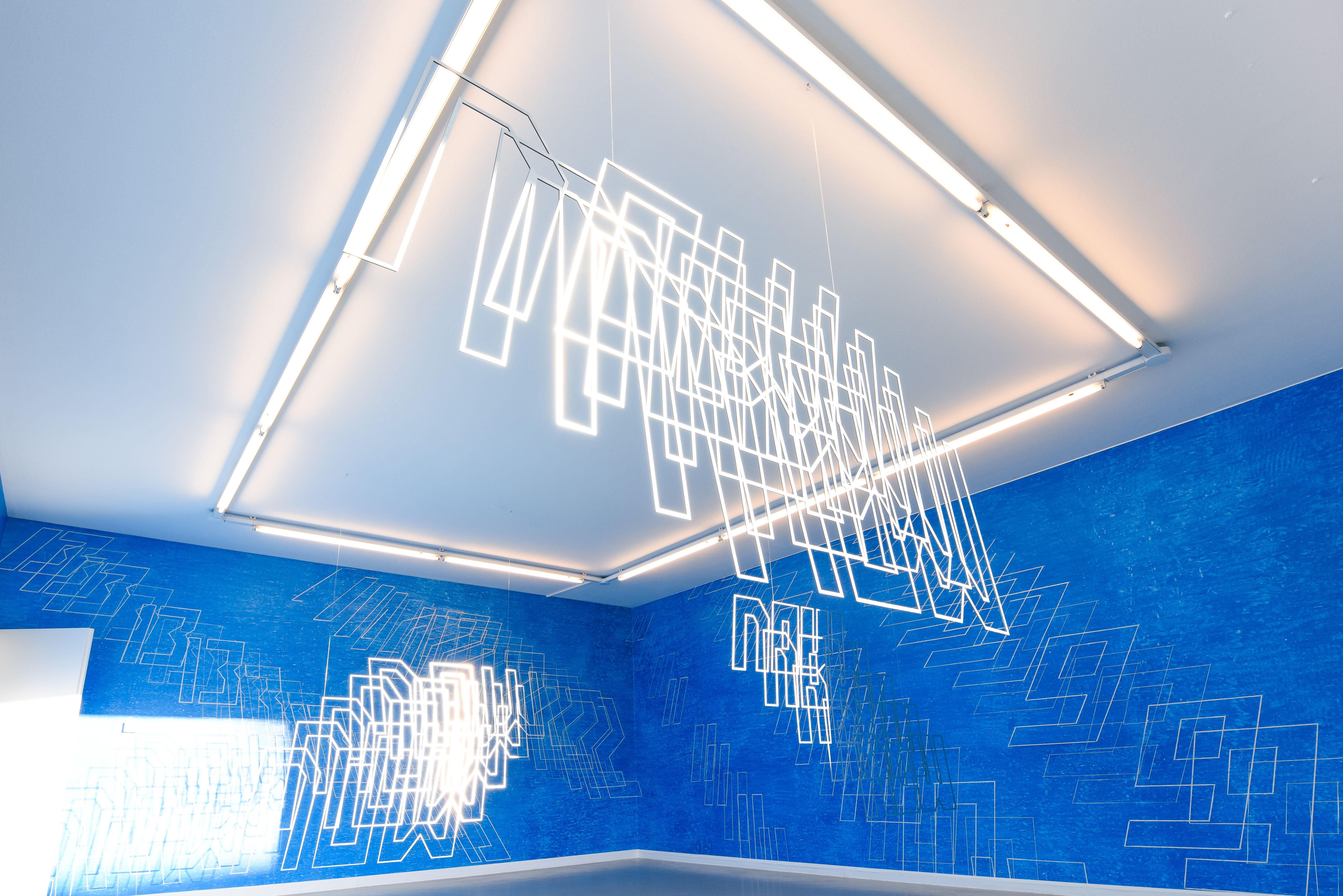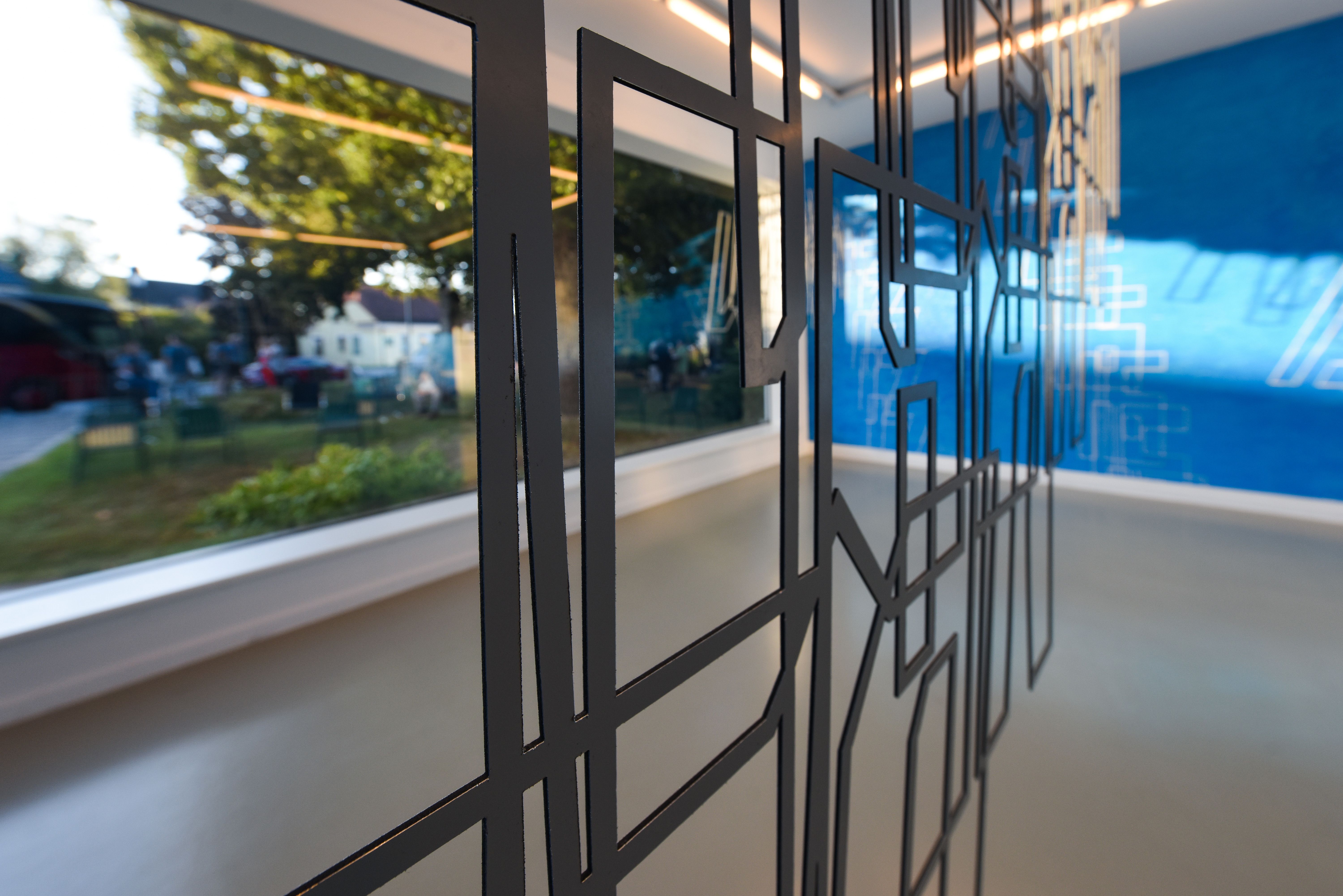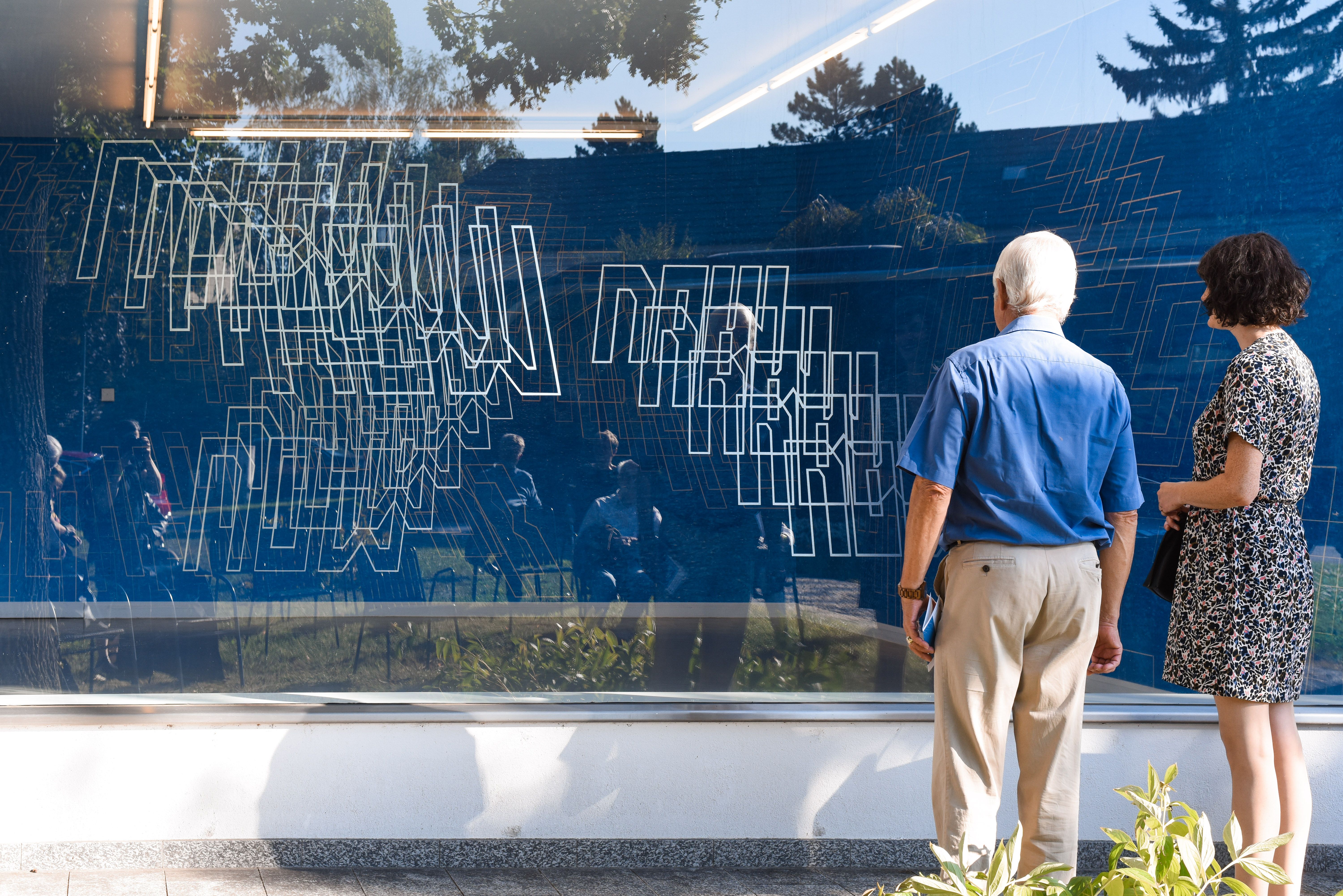Liddy Scheffknecht
:
nine to five
Back
Information
“Working 9 to 5, what a way to make a living
Barely getting by, it’s all taking and no giving
They just use your mind, and they never give you credit
It’s enough to drive you crazy if you let it.”
(Dolly Parton, 9 to 5, 1980, RCA Nashville)
The title of the exhibition nine to five invokes different associations, whether they be the precarious situation of female workers in the US in the beginning of the 1980s that Dolly Parton sings about, David Graeber’s Bullshit Jobs described in the book of the same name from 2018, or the current debates about the dichotomy between paid work and unpaid care work.
To understand how work is represented and criticized at the same time in Liddy Scheffknecht’s exhibition nine to five, we must first take a look at her working process. She began by developing a complex experimental setup for the wallpaper that she then applied to the three walls of the Kunstraum Weikendorf. The wallpaper shows a reproduction of 22 drawings she created between 9 a.m. and 5 p.m. at four different locations. The course of these eight hours is captured in these drawings in the form of outlines. A stencil was attached to the window in a room for each of these eight hours of the day: amounting to altogether 17 digits, according to the European 24 hour clock. When the sunlight fell through the stencil at the top of each hour onto a piece of paper painted with blue oil pastel, Scheffknecht scratched the numbers into the blue layer, causing them to be permanently visible as white lines. While before the top of each hour the light numbers on the paper are distorted, which can be clearly seen in the drawings, they become more and more straight on the paper as the top of the hour nears. The distortions then increase again with the passing 60 minutes of each hour, this time in the other direction. In this way, the rotation of the earth and the path of the sunlight during a defined period of time become visible in the drawings.
When we look at the numbers more closely, we notice blank spots from when the sun was behind the clouds, which were unavoidable disturbances in the precisely planned experimental setup. Because Scheffknecht’s conceptual approach is to repeat her artistic work over and over, the act of drawing becomes its formal opposite: Instead of color being applied to the paper, parts of the blue oil pastel layer are removed with a screwdriver and a ruler to expose the white lines of the numbers. These are rendered in a typography developed by Scheffknecht that can be found in many of her works, like soon (before and later) (2020) and now (9. September) (2018). It is a font that invokes many associations, like digital displays defined by a certain standardization in form.
The same typography can also be found in the three-dimensional drawings installed in the Kunstraum Weikendorf that spell the word “now.” These three-dimensional drawings also record the transformation of this word within an hour between 9 a.m. and 5 p.m. Looking through the precise lines of the cut-out letters creates new overlapping views of the wallpaper, generating a tension between the two works as well as between them and their surroundings, charging the period of time in the title with the promise of an immediate temporal designation: the “now” of the present. The redundancy and regularity of nine to five is disrupted; through its anchoring in the present, the continuum of time is severed, as it refreshes itself again and again.
The time defined in the exhibition nine to five is both a necessary parameter of the artistic experimental setup and the thematic focus of these works. With nine to five, Scheffknecht lends new meaning to a time that is normally associated with a regular work day, repetitive activities, and routines. The process of creating the works was also defined by repetition: the numbers of each hour were scratched into the blue ground six times every hour, focusing on the often unnoticed passing of time as a theme and making it comprehensible in a visual form. By showing us how differently these eight hours could be used each day and by making time understandable in a pictorial form, Scheffknecht demonstrates the potential these eight hours hold—a potential that does not have to correspond with the bureaucratic and redundant 9 to 5, for as Dolly Parton sings, “It’s enough to drive you crazy if you let it.”
Veronika Rudorfer
Images (7)
